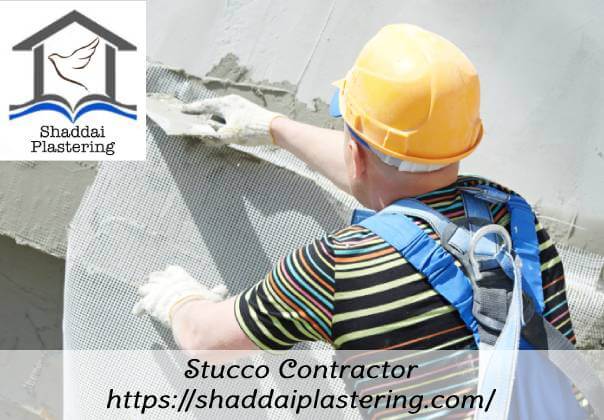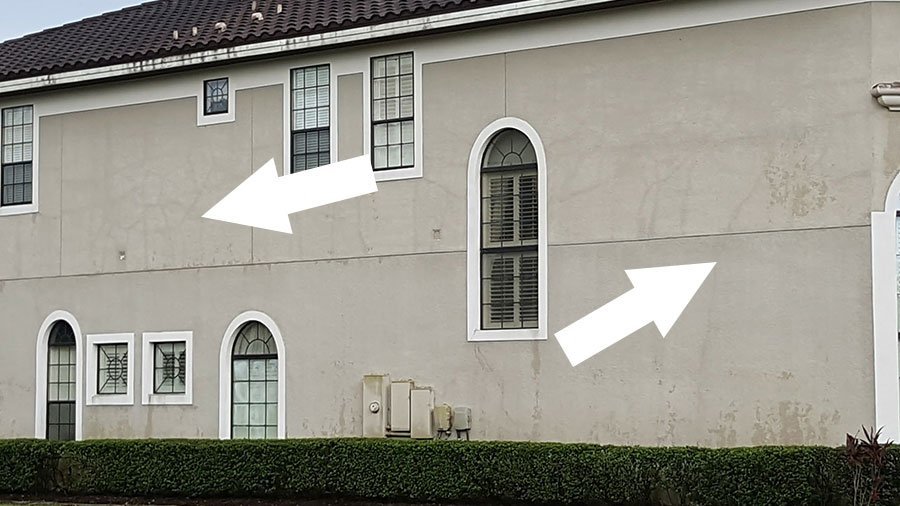Just How a Qualified Stucco Contractor Can Enhance Your Home's Visual Allure
Just How a Qualified Stucco Contractor Can Enhance Your Home's Visual Allure
Blog Article
The Benefits of Picking Stucco for Exterior Finishes
Choosing stucco for outside finishes presents a compelling situation for home owners looking for a mix of resilience, aesthetic flexibility, and energy performance. Recognized for its ability to withstand numerous weather problems, stucco not just minimizes lasting maintenance expenses but additionally boosts the visual allure of any home with its range of structures and colors.

Resilience and Durability
Stucco, a blend of lime, cement, and sand, provides outstanding resilience and longevity for outside surfaces. This material is specifically immune to rough climate condition, including heavy rainfall, strong winds, and severe temperatures. Its structure permits it to endure wetness seepage, therefore reducing the danger of mold and mildew and mildew, which can endanger the honesty of other exterior materials.
Stucco is known for its reduced upkeep demands, as it does not call for constant repainting or securing, unlike timber or vinyl exterior siding. When appropriately mounted, stucco can last for several decades, making it an economical selection in the future. In addition, stucco's resistance to breaking and fading ensures that the aesthetic charm of the exterior continues to be intact with time.
One more considerable advantage of stucco is its fire resistance, an important consideration for numerous home owners. Unlike wood, stucco does not melt conveniently, offering an added layer of safety and security (stucco contractor). On the whole, the longevity and durability of stucco make it an excellent alternative for those looking for a trusted and long-lasting exterior finish that can withstand the examination of time and environmental obstacles
Visual Flexibility


Furthermore, stucco can be quickly tinted utilizing integral pigments, providing an extensive palette to select from. This convenience in color permits personalization, allowing frameworks to harmonize with their surroundings or attract attention as distinct sites. Furthermore, stucco can be integrated with other materials, such as stone or timber, to produce aesthetically striking contrasts that boost the general appearance.
The product's capability to be molded right into different forms additionally contributes to its visual appeal. Custom-made functions like arches, trim, and ornamental aspects can be seamlessly incorporated into stucco layouts, enhancing the aesthetic complexity of a structure. Overall, the visual adaptability of stucco not just enhances the aesthetic allure of a home yet likewise mirrors the individual design and preferences of the homeowner, making it an excellent option for outside surfaces.
Energy Efficiency
Energy-efficient building products are necessary for reducing power intake and decreasing utility costs, and stucco stands apart in this regard. Its distinct make-up and application contribute to enhanced thermal performance, making it possible for structures to preserve steady indoor temperature levels throughout the year.
Stucco has a high thermal mass, my sources indicating it can save and soak up warm during the day and release it slowly in the evening. This home aids reduce severe temperature level changes, decreasing the reliance on home heating and cooling down systems, therefore fostering energy effectiveness. Furthermore, stucco can be used over protecting products, additionally improving its energy-saving capacity.
On top of that, the seamless nature of stucco decreases air seepage, which can bring about unwanted warm loss or gain - stucco contractor. This airtight obstacle not just improves comfort levels yet additionally decreases the workload on a/c systems, inevitably decreasing energy expenses
Additionally, stucco's reflective qualities can decrease warmth absorption, particularly in warmer environments, which assists in preserving cooler interior atmospheres and reduces dependence on cooling. By picking stucco for exterior surfaces, building contractors and property owners can make significant strides in the direction of energy effectiveness, cultivating both environmental sustainability and financial savings.
Low Upkeep Requirements
What makes stucco an enticing option for property owners looking for a low-maintenance exterior coating? The toughness and durability of stucco are vital factors that add to its low upkeep needs.
Stucco is non-combustible and does not bring in pests, considerably lowering the possibility of damages from termites or fire. Its exterior surface area is likewise immune to mold and mildew and mold, especially when used with a top notch finish. Property owners can expect to perform just occasional cleansing with water and moderate cleaning agent to keep its look.
Furthermore, stucco is less vulnerable to cracking than various other products, especially when set up correctly with here appropriate expansion joints. Need to any kind of fixings be needed, they are affordable and usually straightforward, negating the requirement for extensive renovations. In general, the mix of sturdiness, resistance to pests and dampness, and marginal upkeep makes stucco a superb choice for those prioritizing a low-maintenance outside surface.
Eco-Friendly Features
Picking stucco not just straightens with home owners' desires for low maintenance however additionally supplies significant green properties. Made primarily from all-natural products such as lime, sand, and concrete, stucco offers a lasting alternative for outside coatings. Its manufacturing process consumes less energy contrasted to synthetic materials, contributing to a lower carbon impact.
In addition, stucco is extremely sturdy, which translates to a much longer life-span and decreased demand for frequent replacements. Stucco's thermal mass buildings improve energy performance by managing interior temperature levels, which can lead to minimized heating and cooling costs.
Furthermore, stucco Bonuses can be used with low-VOC (unstable organic substances) surfaces and paints, decreasing damaging emissions connected with interior air high quality. Its flexibility enables a range of textures and surfaces, guaranteeing visual charm without compromising eco-friendly stability - stucco contractor. By picking stucco, house owners not only boost their property's appeal yet also add favorably to environmental sustainability
Conclusion
In summary, stucco presents an engaging selection for exterior surfaces due to its durability and long life, aesthetic convenience, energy effectiveness, reduced upkeep requirements, and eco-friendly homes. These qualities not only improve the aesthetic allure of homes but likewise contribute to cost savings and ecological sustainability. As home owners seek eye-catching and resilient building materials, stucco sticks out as an optimum solution, straightening with contemporary needs for both capability and environmental duty in domestic design.
Picking stucco for outside coatings presents a compelling situation for house owners looking for a mix of toughness, aesthetic flexibility, and energy effectiveness. Overall, the aesthetic convenience of stucco not just boosts the visual allure of a residential or commercial property however additionally shows the individual style and preferences of the homeowner, making it an exceptional selection for exterior finishes.
What makes stucco an appealing option for property owners seeking a low-maintenance exterior coating? Made mostly from all-natural materials such as lime, sand, and concrete, stucco presents a lasting alternative for outside finishes.In summary, stucco presents an engaging option for outside finishes due to its resilience and durability, visual flexibility, energy effectiveness, reduced maintenance needs, and green properties.
Report this page